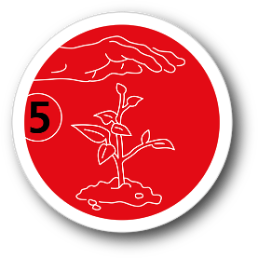The primary aim of this SRF is to provide bases for sustainable phytosanitary protection which, in accordance with Agroscope’s strategic priorities for the agriculture and food system, is capable of increasing said system’s competitiveness, safeguarding the natural resources and ecosystem services over the long term, and reducing environmental risks and emissions, and is based on production systems that are adapted to the changed demands of society. Specifically, this means:
- that Agroscope research into the priority elements of phytosanitary protection should be application- and impact-oriented, and internationally networked.
- that public authorities (the FOAG, FOEN, FSVO and cantons) can count on Agroscope’s expertise to put in place the framework conditions for future-oriented phytosanitary protection.
- that Agroscope’s knowledge will serve as a basis for agricultural practice, including its upstream and downstream sectors, to further develop phytosanitary protection in line with the primary aim.
In order to achieve these objectives, the SRF must provide answers to the following questions:
- Knowledge of the basics: What new findings on the biology of harmful organisms and on their interactions with the components of agroecosystems (soil and plants, biodiversity, antagonists, other harmful organisms) permit the development of optimised cultivation systems and new phytosanitary protection methods for guaranteeing yields and production quality including of food and feed, whilst improving resource efficiency and reducing the use of auxiliary substances? What cultivation measures can reduce the risk of the infection of maize and cereal crops with toxigenic fungi, and their consequent contamination with mycotoxins?
- Alternatives to chemical PPPs: What processes and methods based on new findings and technologies in phytosanitary protection can ensure high quality, safety, profitability and crop yield security whilst reducing the risks associated with PPPs?
- Techniques and methods for reducing the risks associated with chemical phytosanitary protection: What techniques, processes and methods (e.g. in the spheres of forecasting and application technique) can be utilised to reduce the use and risks of PPPs?
- Integrated low-risk strategies (best practice): How can the elements of integrated phytosanitary protection be incorporated into the best low-risk, lastingly effective plant-protection strategies whilst bearing in mind the specific needs of the individual crop?
- Expert report for the authorisation of PPPs: Within the scope of the authorisation and when used in accordance with good farming practice, what PPPs meet the requirements in terms of minimised risk for humans and the environment? How must the criteria for authorisation be formulated so as to enable an adequate assessment of the risks, and what new criteria must be included to enable better assessment of the risk for humans and the environment?
- Prevention and diagnosis: What emerging harmful and particularly dangerous organisms, pathogens and their vectors are putting agricultural crops at risk, how can these be identified, and what preventive and control measures must be taken against them?






